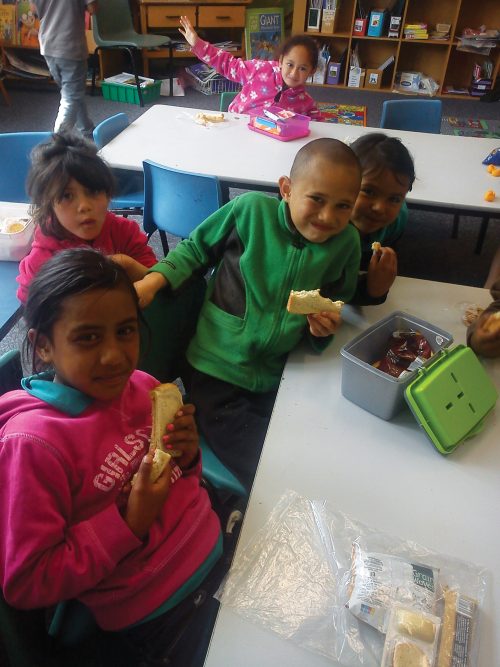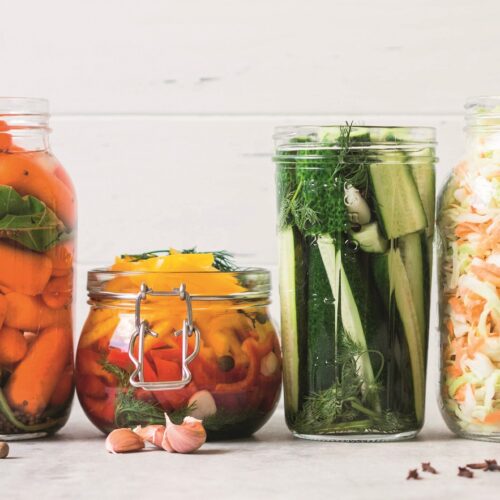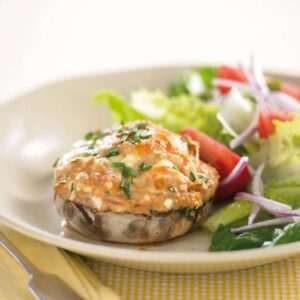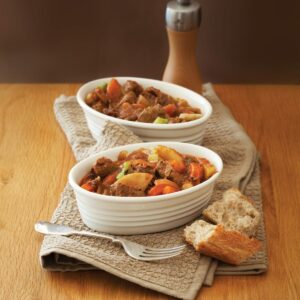
Kiwi kids making healthy lunches a reality.
There’s been a lot in the news in recent months about school lunches — kids going without, kids not getting a healthy lunch, schools struggling to cope. These two very different schools are great examples which demonstrate that nutritious lunches for all Kiwi kids can be a reality.
Healthy change by example
Horohoro school in the Bay of Plenty is a decile three school where huge improvements have been seen in the type and quality of lunches children bring to school in the past year.
Principal Eden Chapman faces several issues with school lunches in addition to children having little or no lunch.
“Some families think they are treating their children by giving them high-sugar and high-fat foods. We have had cases where parents have provided a large bag of chips, a whole packet of chocolate biscuits and a litre of juice for one eight-year-old child. Children are also regularly given cheap and unhealthy food such as dollar pies, two-minute noodles, large cookies and bags of chips for budgetary reasons.
“Worst of all, parents who try to provide good food for their children don’t want to send them to school when they have nothing to give them.“
The school has taken action — and enlisted help — to try to address these issues. Charity KidsCan provides a supply of bread and spread, muesli bars, fruit pottles and raisins so that every child can always be fed. Sanitarium and Fonterra provide Weet-Bix and milk so the school can provide breakfast.
“Most of our children are collected from their houses,” says Eden, “and if a parent says the children can’t come to school because they have no lunch, we can reassure them that we can feed the children.”
Horohoro goes beyond just providing food though, and makes a point of spreading the healthy eating message through education. All classes regularly cook food and discuss nutrition, healthy choices and ‘treat’ foods.
Eden says, “The cooking classes and discussions around healthy and treat foods have had the most effect on school lunches. Children pressure parents to provide them with more balanced lunches.”
Eden’s wife Jenny, a teacher at the school, agrees, and says the most effective change in the junior school has been sitting down together to eat lunch.
“I sit with them, we say a karakia kai and we talk about all the good things in people’s lunchboxes and just chat about the day. I never focus on the poorer choices as this is out of the hands of the children. I have found from this that the children now hold their sandwiches and fruit up in the air and proudly say, ‘Look what I’ve got today Mrs Chapman!’ Then I make an appropriate amount of fuss about the healthy food. I also model healthy eating and sit with them eating my fruit, salad or sandwich and show them that it’s good enough for me, too.”
The effect of healthier food in the school has been obvious to both principal and teacher.
“It is common sense that if a child is not hungry and has eaten a nutritious lunch with long-lasting energy, that hunger barrier to learning is not present,“ says Eden.
“I find the children more focused, particularly in the afternoon when often they would be low on energy and motivation,” says Jenny.
But benefits are even more far-reaching.
“I have noticed awareness around the food the children are eating,” says Jenny. “They know what is going to give them energy for learning and now they automatically ‘choose the healthy things first’ — which is a mantra in the junior room.
“Because we offer food at school the children in need have learnt how to prepare their own lunch from the nutritious food on offer and they are more independent and self-reliant because of this.
“Interestingly, at shared kai events at school we are getting fewer packets of chips and biscuits and more homemade sandwiches, fruit platters and vegetable nibbles. This shows me that the parents are more conscious of the school’s culture of healthy eating.”
Fuelled4life
If you feel your influence on what your children eat at school waning as they grow up, you’re not alone. Many children are buying food at school from the tuck shop and, just like us, their choices are influenced by what’s in front of them. If you’re not sure whether or not your child’s school or early childhood education (ECE) service is doing everything possible to promote healthy eating, a practical way to have a positive influence is to ask if they are signed up to fuelled4life.
Fuelled4life is the programme using the food and beverage classification system for schools and ECE services from the Ministry of Health and run by the National Heart Foundation. Foods and drinks are classified as ‘everyday’, ‘sometimes’ or ‘occasional’, to help schools and ECE services provide healthier food and drinks.
As a self-funding programme, manufacturers pay a fee to be listed in the fuelled4life buyer’s guides. Of course. they first need to meet the Ministry of Health criteria for an ‘everyday’ or ‘sometimes’ food or drink. ‘Occasional’ food and drinks are not included.
For schools and ECE services the programme is free to join. The buyer’s guides, along with recipes and other information, make it easier for them to provide healthier foods and drinks for their students. After all, it can be a big ask without that support. For more information, go to www.fuelled4life.org.nz.
Old-school values in a modern world
Ficino school in Auckland is a small, private independent school with a spiritual focus. Ficino has a different approach from most schools when it comes to lunch. All students, from new entrants to Year 8, sit together and are served a hot meal every day (the day we visited the menu was rice and dhal, along with an array of colourful salads, vegetables and fruit). The menu varies with the seasons but it is always simple, vegetarian food. Parents pay around $6.00 a day for morning tea and a cooked lunch per child.
Ficino has always had this ‘sit down’ lunch policy, and principal Peter Crompton says the benefits are undeniable.
“Most schools don’t provide sit-down lunches for practical reasons and because of the culture in our society of eating on the hoof, or on our laps in front of the TV.
“We find providing a fresh and nourishing sit-down meal every day ensures proper time is given to eating so that the students’ bodies can digest their food properly. It provides an opportunity for children to learn the art of good manners and polite conversation, and it is a unique time when staff and students sit together and look after each other. Caring for one another is a central tenet of our school culture.”
Ficino school sees both short-term and long-term benefits from its lunch policy. “Children are calmer and more attentive in lessons,” says Peter, and “they learn to converse intelligently with their peers and adults.”
Because all the children are involved in setting tables, serving each other and clearing up, “every day they have an opportunity to give their attention to the needs of those around them. This carries over into the rest of their day,” says Peter.
He believes exposure to healthy food at school shapes the students’ long-term eating habits. “Children get a taste at a young age for wholesome, nourishing food.”
School lunches at Ficino have the power to tame fussy eaters, too. Parents of new entrants are often surprised to find their children eating things they wouldn’t touch at home. The power of the peer group, and of healthy eating behaviour being modelled as completely normal, overcomes natural fussiness.
Ficino’s cook, Rij Kika, says parents often ask her for recipes for the children’s favourite dishes, including a ‘green soup’ of broccoli, asparagus and courgettes.
See How to pack a healthy lunchbox for tips and great ideas for creating healthy, balanced, easy (and most importantly, tasty!) lunchboxes for little kids and big kids alike.
www.healthyfood.com










